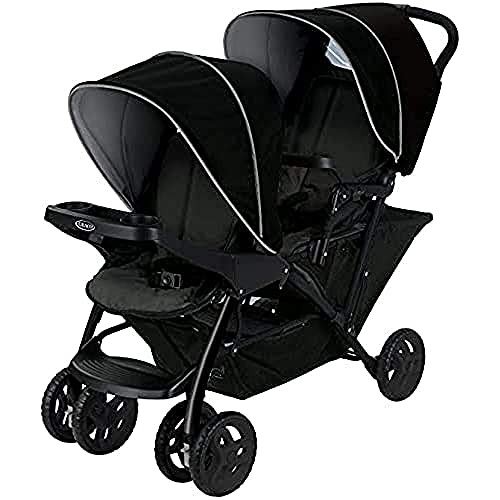Pram vs. Pushchair: Understanding the Key Differences
When it pertains to carrying infants and young kids, moms and dads frequently discover themselves overwhelmed by the different alternatives available. Among these options, prams and pushchairs are 2 of the most common forms of baby transport. While the terms are frequently used interchangeably, each has unique functions and advantages that cater to diverse parenting needs. In this post, we will explore the fundamental distinctions between prams and pushchairs, assisting parents make informed choices about which is best fit for their household.
What is a Pram?
A pram, or perambulator, is a kind of baby carriage developed mainly for newborns and babies. please click the following article include a totally flat lying position, which is important for newborns who require to lie flat for back development. A lot of prams come geared up with a deep, enclosed body that offers a cozy and protected environment for the baby, typically with extra functions such as hoods or covers to shield them from the aspects.
Secret Characteristics of Prams:
- Flat Lying Position: Supports healthy back advancement in newborns.
- Enclosed Design: Protects the baby from wind and sunlight.
- Standard Aesthetic: Often made from products like wicker or material, giving a classic look.
- Weight and Bulkiness: Generally heavier and bulkier than pushchairs.
What is a Pushchair?
A pushchair, also referred to as a stroller or buggy, is created for older infants and young children who can sit up unassisted. Pushchairs enable numerous seating positions, consisting of reclining choices for naptime. They are normally lighter and more nimble than prams, allowing parents to browse hectic locations with ease. Numerous pushchairs feature adjustable manages, storage compartments, and can frequently be folded for hassle-free transportation.
Key Characteristics of Pushchairs:
- Seating Position: Designed for children who can sit up, with numerous reclining positions.
- Light-weight and Compact: Easier to maneuver and transport.
- Flexibility: Many designs are convertibles or can accommodate automobile seats.
- Storage Features: Often consist of baskets for bring diaper bags, toys, etc.
Key Differences Between Prams and Pushchairs
Below is a relative table highlighting the critical differences between prams and pushchairs.
| Function | Pram | Pushchair |
|---|---|---|
| Target Age | Newborns to 6 months (flat position required) | 6 months to toddler age (sitting unassisted) |
| Design | Enclosed, standard style | Open, modern-day style |
| Weight | Heavier, bulkier | Lighter, more compact |
| Seating Options | Flat only | Numerous positions consisting of reclining |
| Manoeuvrability | Less maneuverable due to weight | Highly maneuverable |
| Storage Space | Minimal | Generous beneath baskets |
Choosing Between a Pram and a Pushchair
Consideration Factors:
- Age of the Child: Choose a pram for newborns and a pushchair for older infants and toddlers.
- Intended Use: If you plan to do a lot of strolling or browsing city streets, think about a design that suits your lifestyle.
- Area: Assess the readily available storage in your home or car and how compactly a design can fold.
- Budget plan: Consider the price range, as prams and pushchairs can differ extensively in expense.
- Functions: Look for additional functions that may be beneficial for your everyday life, such as cup holders, canopies, or easy folding mechanisms.
Benefits and Disadvantages
Advantages of Prams
- Perfect for Newborns: Encourages healthy spinal column development.
- Comfy Space: Provides a relaxing environment for babies.
Drawbacks of Prams
- Weight: Heavier and bulkier, making them less useful for everyday use.
- Minimal Use Time: Generally useful just for the very first six months.
Benefits of Pushchairs
- Versatility: Suitable for longer durations as the child grows.
- Lightweight Design: Easier to bring and maneuver.
Disadvantages of Pushchairs
- Not Suitable for Newborns: Requires the child to be able to sit up unassisted.
- Less Protective: Generally more exposed than a pram.
Frequently Asked Questions (FAQs)
1. Can I use a pushchair for a newborn?
Many pushchairs are not developed for newborns; however, numerous designs include baby automobile seat adapters. Some pushchairs offer a fully reclining seat option that may be ideal for babies, but make sure the maker confirms it's safe.
2. Which is better for travel?
Pushchairs are generally preferred for travel due to their lightweight and compact nature. They can frequently be folded easily for transportation on public transportation and fit more readily in vehicle trunks.
3. The length of time can I utilize a pram?
Prams are usually suitable for babies till they reach around 6 months of age or when they can support themselves in a seated position.
4. Exist hybrid models offered?
Yes, lots of makers produce hybrid models that can be converted from a pram to a pushchair depending upon the kid's advancement stage.
5. What should I search for when purchasing a pram or pushchair?
When buying, think about safety functions, ease of usage, durability, weight, and storage. It's also a good idea to evaluate different models for comfort before deciding.
Selecting between a pram and a pushchair eventually depends upon the age of your kid and your way of life preferences. Understanding their distinctions assists moms and dads make notified options that accommodate their household's needs. Moms and dads can delight in the journey of being a parent by making sure that their child's convenience and safety are constantly prioritized, while also considering their own convenience and design.

